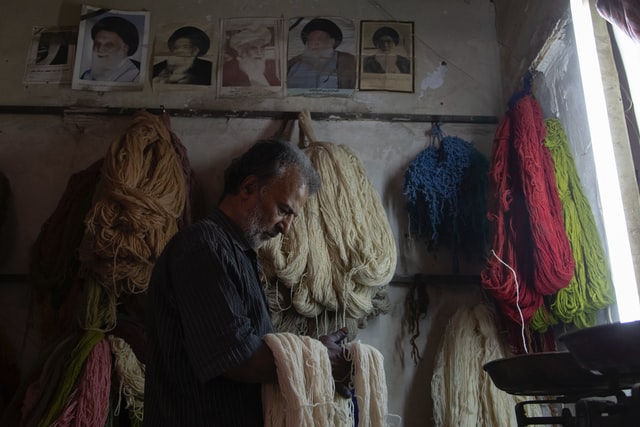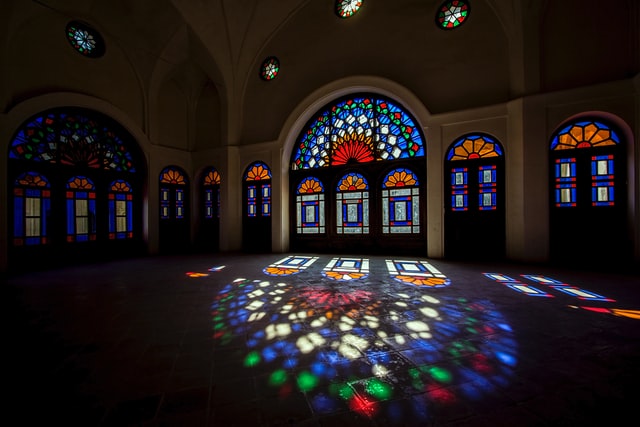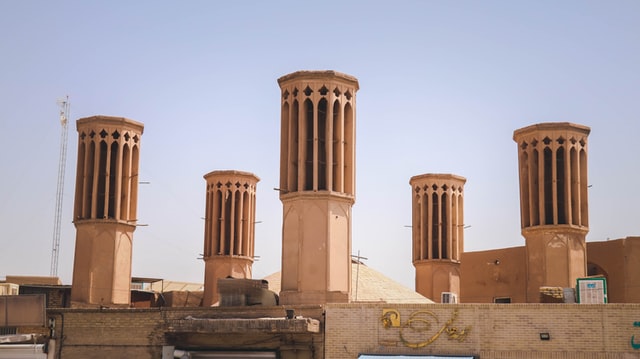Considering factors, such as prior records, indigenous people’s tendencies, climate, and access to raw materials, some regions of each country are known by one or several particular professions or industries.
Yazd, Isfahan, and Kashan are the three leading cities in the Iranian textile industry.
It could be said that Yazd is the most famous city in Iran in the field of the textile industry. Yazd is the capital of Yazd province, and it is currently the 15th largest city in Iran.
If today, Yazd is known for its mud houses and attractive windmills; in the past, this city was known for its stunning and luxurious fabrics sent to the whole world via the Silk Road. Handicrafts, including textile products, have grown in Yazd due to its remoteness from the facilities and the modern cities in ancient times.
According to the old inscriptions found in the main mosque of Yazd, most of its inhabitants were textile weavers or doing related professions, such as spinning, dyeing, and silk production. In fact, the residents of Yazd first started working in the Iranian textile industry to meet their needs. However, after many years, the art and culture of this city were reflected in the Iranian textile industry and became a popular trade.
The involvement of people’s art and culture in this industry attracted people’s attention not only in Iran but in the whole world, which led to the export of textiles from the city of Yazd via the Silk Road to other cities and countries.

About one hundred years have passed since the mechanization of the textile industry in Yazd, and it is still the leading industry in this region. Yazd province can be called the hub of Iranian textile industry. There are 2000 textile units in the Yazd province, which employ about 23,000 people.
Actually, 27% of Yazd’s employment is related to the textile industry, and 100% of the Termeh fabric, and 80% of Iranian sofa fabric are produced in Yazd province. Termeh is a nice fabric, which is woven since the Safavid era in Iran.
At present, Yazd has complete diversity in textile production all over Iran. Yazd Textile Industry includes a wide range of textile products, including fibres, yarns, clothing fabrics, curtains, carpets and rugs. The city of Yazd is one of the most active areas of carpet production in Iran and even in the world. Yazd has a long history in the production of both machine-made and hand-woven carpets.
New emerging products (high technology associated with nanomaterials) can be added to the mentioned categories. In addition to industry, Yazd is also leading in promoting academic knowledge of textile and apparel science. The textile engineering department is one of the oldest departments of Yazd University and is active in the fields of textile chemistry, textile technology, and clothing at B.Sc., M.Sc., and Ph.D. degrees.
ISFAHAN

Isfahan is the capital of Isfahan province and has a population of approximately 2.0 million. It is the third-largest Iranian city after Tehran and Mashhad. However, it was once one of the largest cities in the world. Locating at the intersection of the two central north-south and east-west routes that traverse Iran has added Isfahan city’s importance.
Isfahan flourished from 1050 to 1722, especially in the 16th and 17th centuries under the Safavid dynasty when it became the Persia’s capital for the second time in its history under Shah Abbas the Great. Even today, the city preserves much of its past glory.

Isfahan had had the potential to develop the Iranian textile industry since the era of the Qajars. The first textile factory was established in this city in 1925.
Thereafter, more textile factories were set up so that by the end of 1941, 9 big textile factories were already operating in the city. The establishment of textile factories in Isfahan made the city one of the Iranian textile industry hubs in the region to the extent that it was nicknamed “East Manchester.”
At that time, weaving factories were one of the primary income sources for the people of Isfahan, and in less than two decades, nearly ten large textile factories were set up in this city.
Isfahan province accounts for 60% of the country’s total textile industry. 25% of Isfahan province’s industries are related to textile products, and 53,000 official jobs have been registered in the textile industry. The textile industry accounts for 25% of Isfahan province’s employment.
Isfahan produces 75% of the country’s machine-made carpets, 60% of printed fabrics, 50% of fibers, 60% of cotton yarn, and 90% of the country’s scarves and bandages. Like Yazd city, Isfahan is also one of the prominent centres in the training workforce at the academic level.
The Isfahan University of Technology is among the two largest public universities in Isfahan province. It is also the largest university in the country in terms of area. The Textile Engineering Faculty of the University of Isfahan has concluded numerous scientific-industrial contracts to promote the country’s textile industry, especially the Isfahan province’s textile industry.
KASHAN

Kashan is a city in the northern part of Isfahan province. It is more than seven thousand and 500 years old, and Silk Hills in this city is known as the first urban civilization. The artifacts, such as spindle-shaped rings made of clay and stone, as well as human carvings with a lame on knife handles, indicate the existence of cloth at that time.
In the book of the ancient history of Iran, it is quoted that in the 11th century, 8,000 weaving workshops and 250 silk weaving workshops were active in Kashan in 1212.

Historical discoveries revealed that Kashan has been producing precious fabrics in ancient times, which has gained momentous fame for Iran worldwide.
It is noteworthy to mention that many renowned people in history, including Marco Polo, Antoine Shirley, and Knight Chardin, all praised Kashan’s rugs and carpets. Moreover, some exquisite carpets of the Safavid period are now kept in museums and extensive collections worldwide.
Due to such evidence, Kashan has been introduced as the national traditional city in the Iranian textile industry. Besides, it can be a candidate for the world traditional textile city. There are many traditional knitting units in Kashan, and they have won 11 international awards and 33 national awards for the quality of their handicrafts.
In addition to unique handmade carpets originated in Kashan, Kashan is also known for producing machine-made carpets. In 1986, industrial advancement and fundamental developments started, leading to more than 600 carpet production units in Kashan.
It should be declared that silk carpets weaving with silver and gold, also known as Shah Abbasi carpets, are attributed to Kashan. Kashan carpet is one of the most famous handmade carpets representing the art of Iranian carpet weaving and is the symbol of the Iranian textile industry in terms of up-to-date machinery.

Machine-made carpets produced in Kashan are exported to more than 70 countries around the world. Kashan has the capacity to expand its international markets even in the Americas and Oceania due to the production of high-quality products.
In the city of Aran – Bidgol, located 5 km northeast of Kashan, 90% of industries are related to machine-made carpets and associated sectors. Islamic Azad University-Kashan Branch pursues expert human resources training to further enhance the quality of textile products produced in Kashan city.




















Very well ,I want to work in Iran in central lab physical testing do you have any opportunity